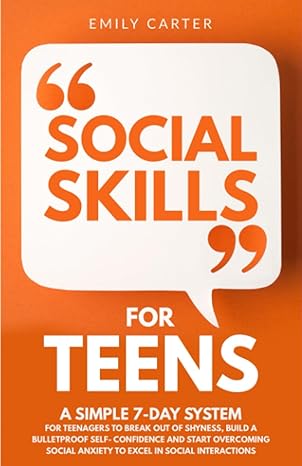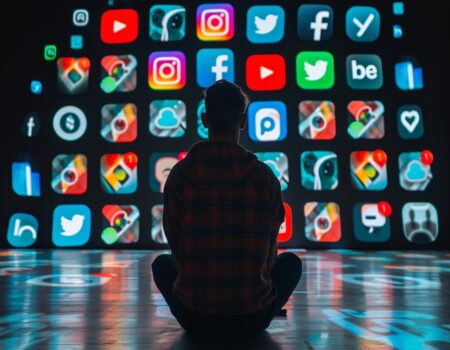Adolescence is a pivotal period in life, marked by an intense quest for identity. Young people seek to define who they are, their values, beliefs, and their place in the world. In this context, social media has become an omnipresent actor, exerting a considerable influence on how adolescents construct and present their identity. While these platforms offer new opportunities for expression and connection, they also present significant challenges and risks for the development of a healthy and authentic self.
Social Media: A Stage for Identity Exploration
For adolescents, social media platforms are veritable identity laboratories. They offer a space where they can experiment with different facets of their personality, explore their interests, and their affiliations with various groups. The ability to create personalized profiles, share content (texts, images, videos), and interact with others allows them to present themselves to the world and receive feedback that contributes to the formation of their self-image.
Social media also facilitates connection with peers who share similar interests, whether they are geographically close or far away. These online communities can offer a sense of belonging and validation, essential elements for the development of a social identity. Adolescents can find support, exchange ideas, and feel understood, which can strengthen their self-esteem and their sense of identity.
Furthermore, digital platforms offer adolescents greater autonomy in managing their image. They can choose what they share, how they present it, and to whom they address it. This ability to “stage themselves” can be a powerful tool for exploring different possible identities and for testing their impact on others.

The Shadows of Digital Identity: Comparison, Pressure, and Distortion
However, this online identity construction is not without risks. One of the major dangers lies in social comparison. Adolescents are constantly exposed to idealized images of their peers and influencers, often filtered and carefully staged. This perpetual confrontation can generate feelings of inadequacy, a decrease in self-esteem, and body dissatisfaction. The pressure to conform to unrealistic beauty standards or ephemeral trends can lead to a weakening of one’s own identity.
Social pressure is also very present on social media. The fear of missing out (FOMO), the need to obtain “likes” and comments to feel validated, and the fear of peer judgment can significantly influence the behaviors and identity choices of adolescents. They may be tempted to modify their appearance, their opinions, or their interests to match the perceived norms of their online social group.
Another significant risk is the distortion of reality. The selective presentation of oneself on social media, where one often only shows the most positive aspects of their life, can create a biased perception of reality among adolescents. They may feel that the lives of others are always more exciting and successful than their own, which can fuel feelings of envy and frustration.
Moreover, exposure to cyberbullying and inappropriate content (violence, early sexualization, disinformation) can have detrimental consequences on the psychological well-being and identity development of adolescents. Negative online experiences can leave lasting emotional scars and alter their perception of themselves and the world.
Towards an Informed Use of Social Media
It is crucial to adopt a nuanced perspective on the impact of social media on adolescent identity development. These platforms are neither inherently good nor bad; their influence largely depends on how they are used and the context in which they are embedded.
To foster healthy identity development in the digital age, it is essential to promote media and information literacy. Adolescents need to be made aware of online persuasion mechanisms, image manipulation techniques, and the risks associated with social comparison. Developing their critical thinking skills will enable them to navigate the digital world more knowledgeably and build an identity less vulnerable to external influences.
The role of parents and educators is also paramount. They must encourage open dialogue with adolescents about their online experiences, help them develop strong self-esteem outside of digital validation, and encourage them to cultivate authentic social relationships in the real world. Setting screen time limits and promoting offline activities are also important measures for a healthy balance.
In conclusion, social media is a complex force that shapes the development of identity in adolescents. It offers opportunities for exploration and connection but also presents risks related to comparison, social pressure, and the distortion of reality. By cultivating a conscious and informed use of these tools, and by providing adequate support to adolescents, it is possible to minimize the negative effects and foster a positive and authentic identity development in the digital age.












No Comment! Be the first one.